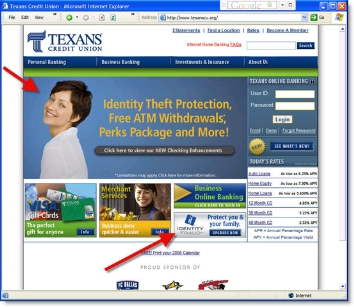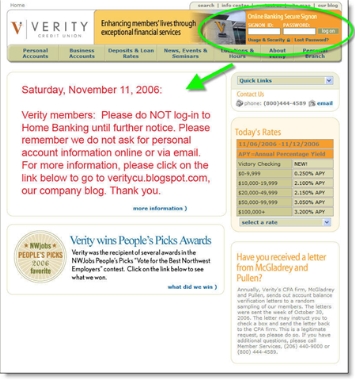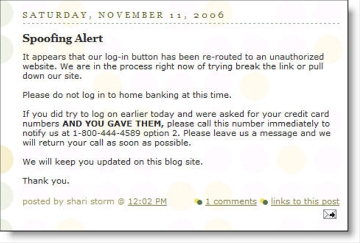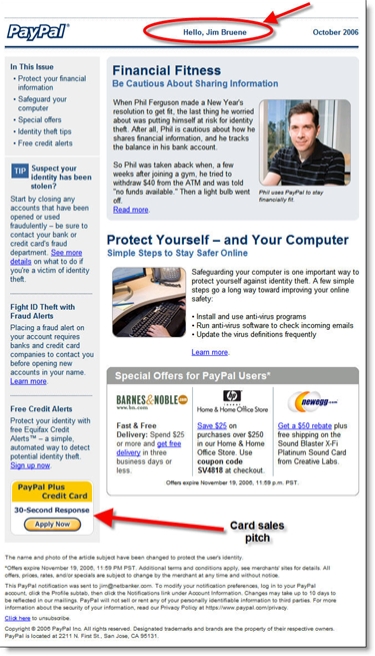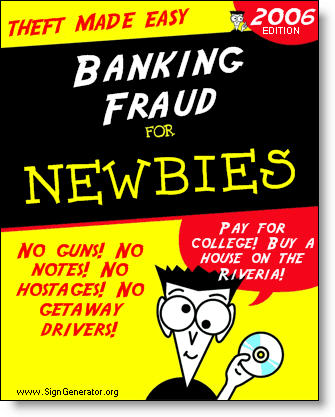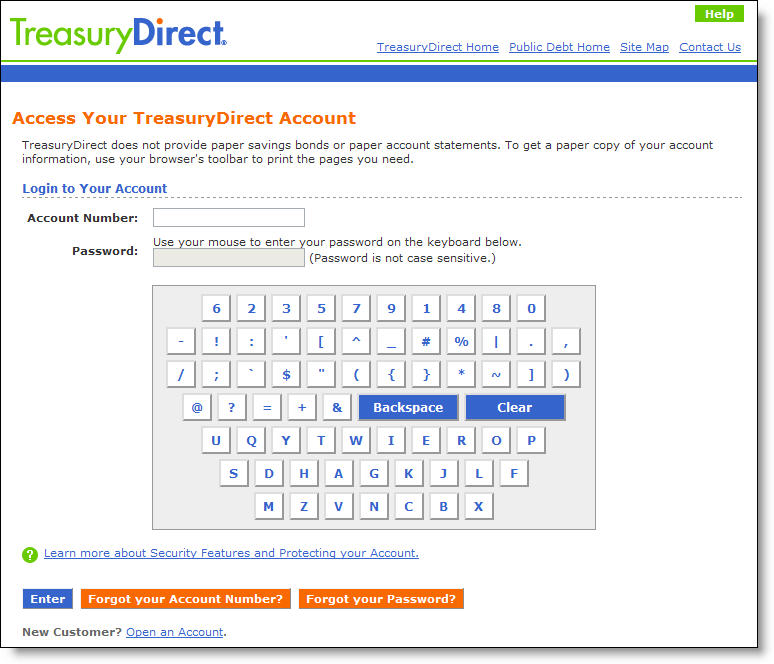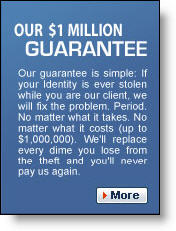by Pieter de Villiers, CEO of Clickatell
 In the fight against financial fraud, it's a simple technology that is proving one of the most effective deterrents, as well as being a cost-cutting tool that builds customer loyalty. Thanks to the incredible reach of SMS, its simplicity, and the fact that it is the most accessible messaging technology in the world, banks are introducing text messaging as an added layer of security for their customers to tackle the problem of identity theft.
In the fight against financial fraud, it's a simple technology that is proving one of the most effective deterrents, as well as being a cost-cutting tool that builds customer loyalty. Thanks to the incredible reach of SMS, its simplicity, and the fact that it is the most accessible messaging technology in the world, banks are introducing text messaging as an added layer of security for their customers to tackle the problem of identity theft.
Case studies
 In South Africa, for example, First National Bank (FNB) <fnb.co.za> claims that its SMS service, called inContact, has not only reduced fraud by 43%, but also has brought about increases in Internet-banking security. Client retention has increased by 15%, and call center costs have been reduced. With 22 million messages sent every month to more than 1.1 million subscribers, FNB is the largest single sender of text messages in the country, responsible for 26% of all messages.
In South Africa, for example, First National Bank (FNB) <fnb.co.za> claims that its SMS service, called inContact, has not only reduced fraud by 43%, but also has brought about increases in Internet-banking security. Client retention has increased by 15%, and call center costs have been reduced. With 22 million messages sent every month to more than 1.1 million subscribers, FNB is the largest single sender of text messages in the country, responsible for 26% of all messages.
With the widespread adoption of mobile communications, it’s a fair assumption that most people with a bank account, credit and debit cards will have a mobile phone. “Contactability” is rarely an issue. With very few exceptions, a text message will reach its intended destination, and it will be read. It is a peculiarity of mobile communications that while many people will ignore a call, they will always look at a text message. It is also a private communication.
Like FNB, a growing number of banks are realizing the power of the text message, and SMS is being introduced as an added layer of security for their customers. By simply receiving a text every time a transaction takes place, money is transferred, or an account is accessed, customers have immediate visibility of their account and can alert their bank about any suspicious activity.
The “soft” benefits are enormous as well. Banks can’t operate without a high level of credibility. Customers have to trust banks to trust them with their cash, their money management and their credit. FNB’s efforts have gone a long way to building and maintaining this level of credibility and trust. In addition, SMS brings the bank closer to its customer: It shows that the bank is innovative and at the forefront of best banking practices, and it raises brand awareness. SMS is not just a technology for FNB; it’s another channel to the customer just like its branches, ATMs, the Internet and telephone banking.
 This is not just a South African trend. Spanish bank Bankinter <bankinter.com> has launched an SMS-based service to inform people each time their bankcard is used. A system warns the user via SMS of each banking operation made with the card. If the customer has not initiated the transactions, the card can be canceled immediately.
This is not just a South African trend. Spanish bank Bankinter <bankinter.com> has launched an SMS-based service to inform people each time their bankcard is used. A system warns the user via SMS of each banking operation made with the card. If the customer has not initiated the transactions, the card can be canceled immediately.
 An article in Australia’s Herald Sun Business Daily cites an internal report from the National Australia Bank (NAB) <national.com.au>. The bank is concerned that it is losing AUS$1 million (US$760,000) due to Internet banking fraud. As one of its initiatives to reverse this, the bank has launched an SMS system to provide PIN-protected access to Internet banking services. According to the report, executives at the bank predict that online fraud will be reduced by 90% once 90% of customers have signed up for the scheme.
An article in Australia’s Herald Sun Business Daily cites an internal report from the National Australia Bank (NAB) <national.com.au>. The bank is concerned that it is losing AUS$1 million (US$760,000) due to Internet banking fraud. As one of its initiatives to reverse this, the bank has launched an SMS system to provide PIN-protected access to Internet banking services. According to the report, executives at the bank predict that online fraud will be reduced by 90% once 90% of customers have signed up for the scheme.
SMS and consumer behavior
It is the very nature of SMS and mobile phone use that contributes to these success rates. People have their mobile phones with them, wherever they are, and typically welcome the SMS security initiative as it means that both the customer and the banks are responsible for account security. The proactive alert makes life far more difficult for the criminal. If the losses through fraud of the financial industry can be reduced, then ultimately the customer could benefit from lower charges.
Never intended to be a commercial product, SMS has taken the world by storm. Mass implementation by mobile operators happened in the early 1990s, and the spread of inter-network roaming agreements provided the momentum to drive SMS take-up and make it a true mass market messaging service. According to Portio Research, 761 billion SMSs were sent in 2004 – that’s more than 100 messages for every man, woman and child on the planet. Portio estimates that worldwide SMS traffic volumes will grow to 2,379 billion in 2010.
With the benefit of hindsight, the success of SMS is not surprising. It is simply an ideal form of peer-to-peer communication: cost-effective, with exceptionally high reach. As a marketing tool it demonstrates a very high response rate of up to 82% for branded campaigns and an average of 16% for other campaigns. It is immediate, reliable and personal. Messages can be customized to appeal to individual groups. Communicators can automate message sending and receive detailed reporting on activities. It is the accidental cash cow of the cellular industry, and the strength of its very simplicity is being leveraged by increasing numbers of businesses worldwide.
***
Pieter de Villiers is the CEO of Clickatell <clickatell.com>, a mobile messaging provider that allows businesses to connect people anywhere, with any message, across any device. Clickatell is headquartered in Redwood Shores, Calif., with offices in South Africa and the United Kingdom.
 I hate phishing. Not only has it cost the world's financial institutions tens of millions in fraud losses, it's just about killed the email channel in terms of getting your customer's attention in a timely fashion, and it's diverted management's attention from much-needed online marketing improvements. That's much worse than the actual fraud losses.
I hate phishing. Not only has it cost the world's financial institutions tens of millions in fraud losses, it's just about killed the email channel in terms of getting your customer's attention in a timely fashion, and it's diverted management's attention from much-needed online marketing improvements. That's much worse than the actual fraud losses.  For example, today I received a fake credit card authorization request from Wells Fargo (see inset). I'm not sure why it prompted a blog entry. Maybe because I use a Wells card or maybe because I've been talking to mobile banking execs about this very subject. But the fake was good enough to force me to take a closer look. The biggest clue is the wrong format for the USD charge, using a "comma" instead of a decimal point between the dollars and sense. But otherwise it's pretty good, and may even net a few card numbers before its taken down.
For example, today I received a fake credit card authorization request from Wells Fargo (see inset). I'm not sure why it prompted a blog entry. Maybe because I use a Wells card or maybe because I've been talking to mobile banking execs about this very subject. But the fake was good enough to force me to take a closer look. The biggest clue is the wrong format for the USD charge, using a "comma" instead of a decimal point between the dollars and sense. But otherwise it's pretty good, and may even net a few card numbers before its taken down.
